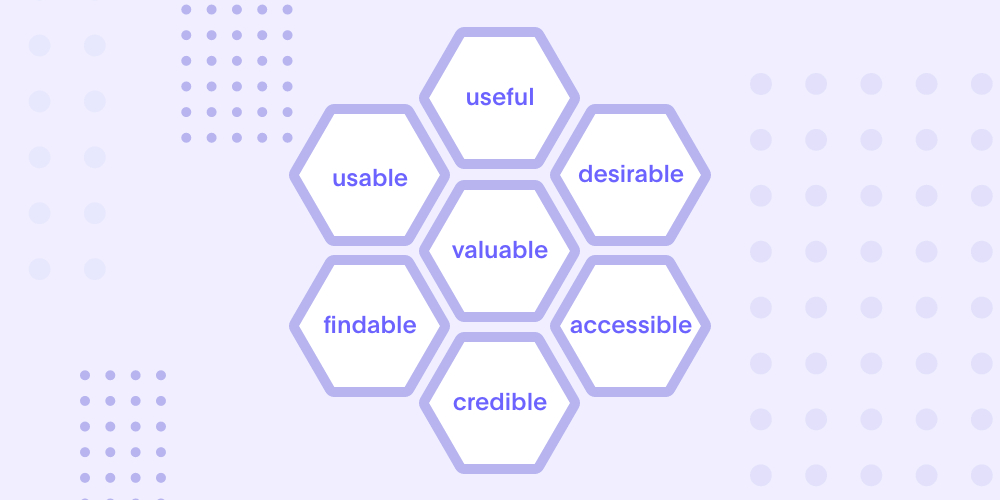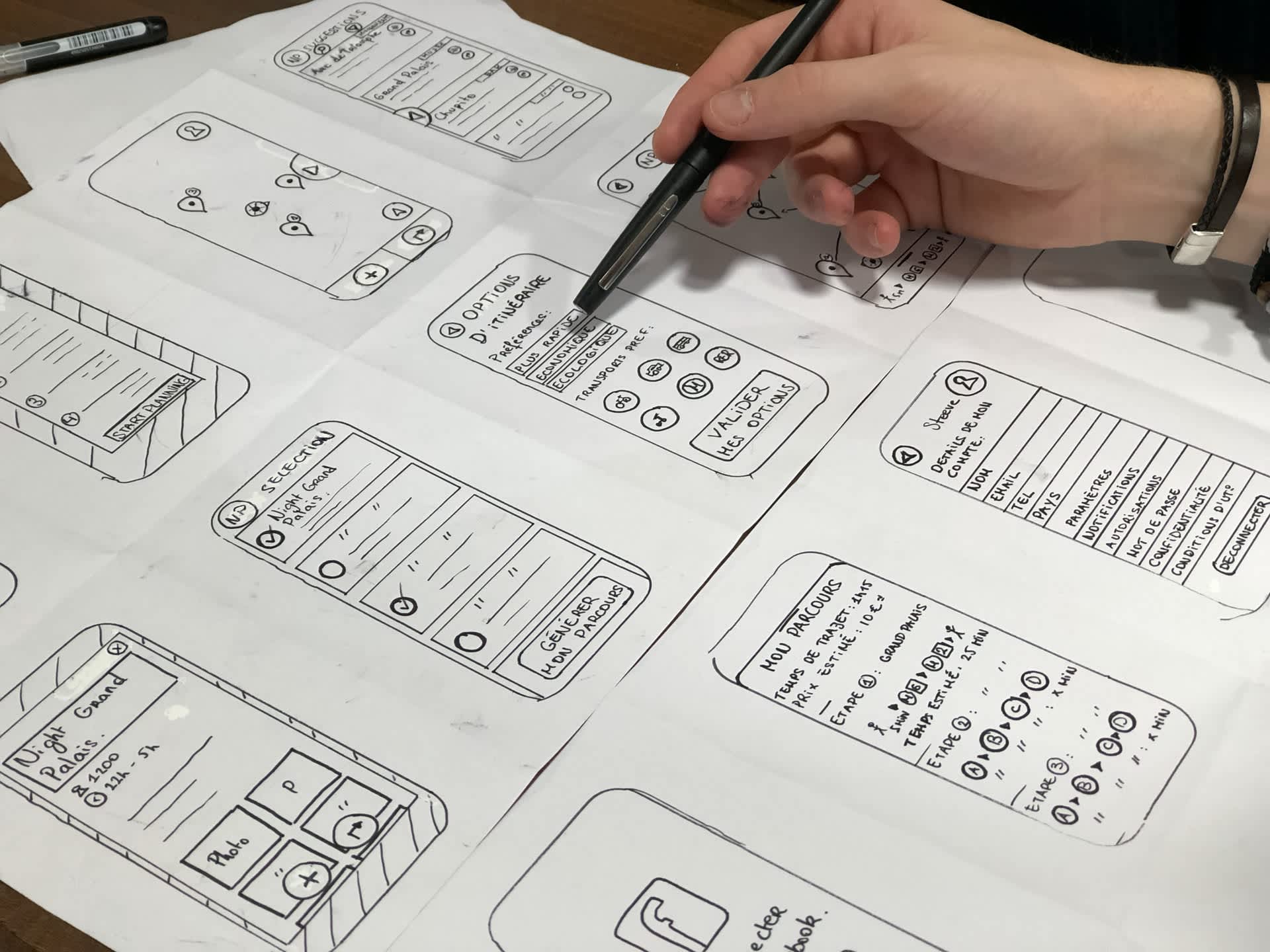Nearly one-fifth of U.S. adults use apps to manage their health, generating more than $250 million in global revenue for app developers, according to Statista. But, with intensifying competition, it's more important than ever to provide a robust user experience and integrate with the most popular mobile devices and smart accessories.
Let's look at what makes a good user experience, some examples in action, and resources you can use.
What Makes a Good UX?
The best user experience differs depending on the application and target audience. However, some principles and guidelines can help differentiate between a good and bad user experience. Through usability testing and other techniques, you can use these guidelines to evaluate how well your product helps users solve problems and achieve their goals.

Peter Morville’s User Experience Honeycomb. Source: Semantic Studios
Peter Morville's User Experience Honeycomb provides an excellent list of core principles for building a great user experience:
Useful – Products should help users achieve a specific goal.
Usable – Products should be intuitive and easy to use.
Desirable – Products should inspire users to achieve their goals.
Findable – Products should make it easy for users to find what they need without much effort.
Accessible – Products should be accessible to all audiences, including individuals with different abilities.
Credible – Users should feel safe and secure while using a product.
Valuable – Products should provide users with a tangible value.
For example, the Fitbit wearable device helps users achieve a specific goal (10,000 steps per day) and automates the entire process, making it incredibly easy to use. At the same time, users can invite their friends to competitions, which can help motivate them to reach those goals. As a result, it checks nearly all of Morville's boxes.
Examples of a Strong UX
Most health and wellness apps focus on engagement, trust, and emotion to address Morville's User Experience Honeycomb. For example, gamification is a popular way to keep users returning, personalization is essential to gain confidence, and UI design should ensure that users feel the right emotions along the way.
Headspace
Headspace provides audio-guided meditations to promote calmness and relaxation. After opening the app, it's easy to see how it brings every element together to achieve these goals. For instance, the brown, yellow, and white color scheme provides a non-stimulating environment, while the progress page shows streaks and other motivational statistics.
Zombies, Run!
Zombies, Run! is a smart watch-compatible fitness app that makes running fun. Rather than building a run-of-the-mill mile-tracker, the app gamifies the experience by chasing users with virtual zombies. Runners can also collect in-game items and move through a compelling storyline, motivating them to run further and faster than they would otherwise.
Stronglifts 5x5
Stronglifts 5x5 is an app that makes it easier to stick with a weightlifting routine. While it's hard to build something for everybody, the app successfully guides users through the construction of customized workout sessions using a simple and intuitive template. The interface also conveys a lot of information without overwhelming the user.
Must-Know UX Resources
Top-notch UX designs require a combination of user research and design skills. Before designing UI components, companies should build detailed personas and conduct user research to understand their target customers. They should also research the competition and platforms to understand the common patterns that users expect.
Some essential tools and resources include:
Dribbble – Dribbble is a leading design community where anyone can find ideas for UI design and workflows. In addition, the design community makes it easy to find helpful advice or even hire freelance designers with established portfolios.
Laws of UX – Laws of UX offers a collection of best practices designers should keep in mind when building user interfaces, including everything from heuristics to cognitive biases.
Figma & Sketch – Prototyping tools, like Figma or Sketch, can help design teams quickly create and test workflows without building an entire solution. In addition, there are many templates that you can use to get up and running quickly.
HackDesign – HackDesign provides a free design lesson delivered each week to your inbox, along with a curated list of design tools and interactive content to help you learn.
UXPin – UXPin provides a range of educational content, including everything from setting up your DesignOps team to design trends to keep in mind each year. And best of all, these resources are free.
A handful of blogs can also provide ongoing insights to help level up user experience design skills:
Usability Geek – Usability Geek provides an excellent resource for ongoing design and usability content. For those new to UX design, the "Start Here" section also provides an in-depth introduction.
Nielsen Norman Group - The NN Group is a world leader in UX research, providing a wealth of insights on their blog, along with various books and other training webinars.
A List Apart – A List Apart is an old resource focused on user interface design. In particular, the resource focuses on web design topics, like CSS, although it has been expanding into other areas over time.
The Bottom Line
UX design is critically important for health and wellness apps as the space becomes more competitive. Fortunately, if you're armed with the right information and best practices, there are a growing number of resources that you can use to build optimal user experiences.
If you're optimizing UX design, Intent can help you with everything from user research to building a minimum viable product.
Contact us for a free consultation to learn how we can help bring your project to life.

Greg Cargopoulos
Marketing Lead

